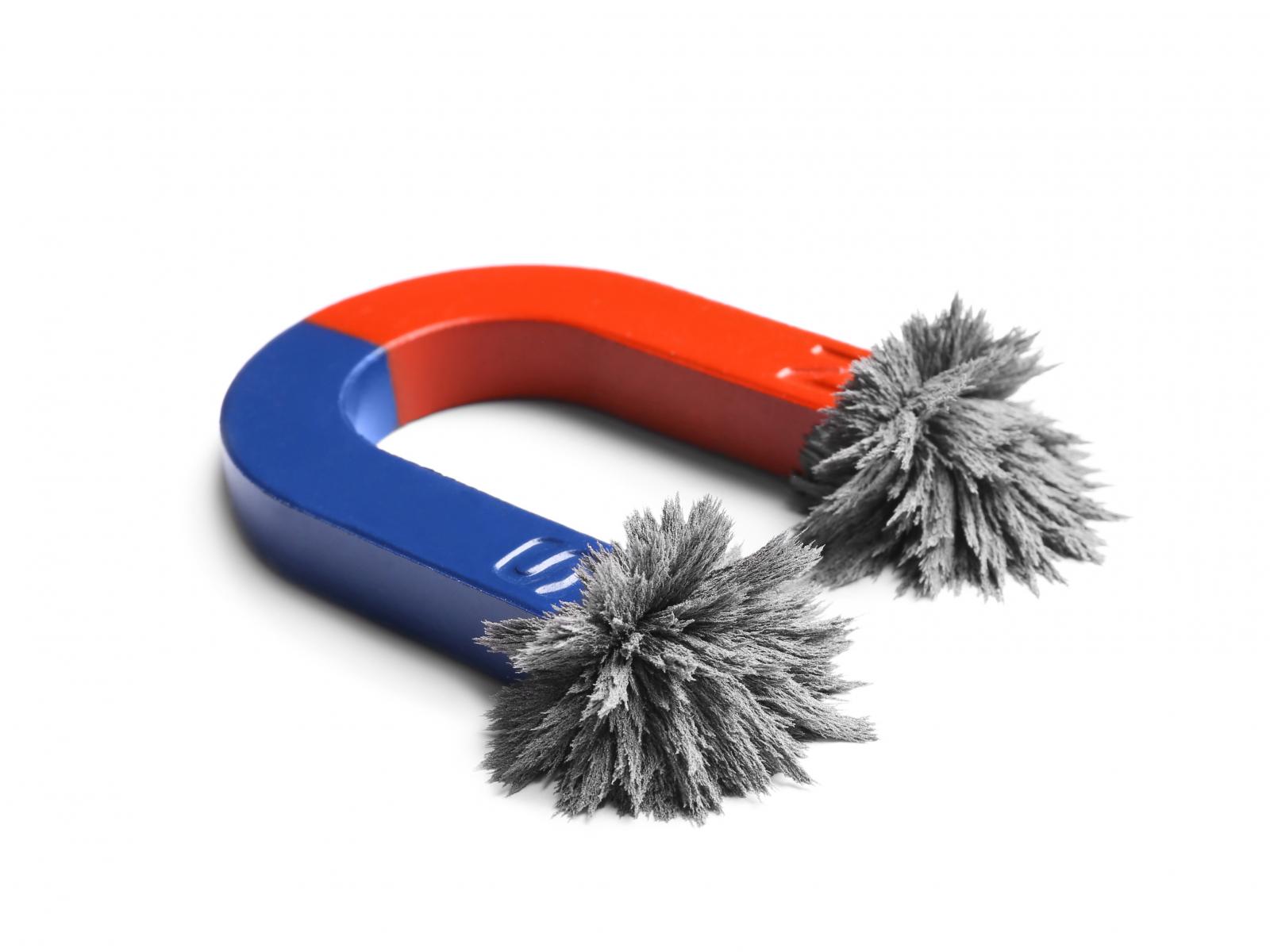Lithium Extraction Nanoparticle Research Earns Regional FLC Award
Process may help make critical materials more easily available in the U.S.

Lithium-containing nanoparticles can be collected easily by their attraction to a magnetic collector, just like the iron filings shown here are attracted to a simple magnet.
(Image by New Africa | Shutterstock.com)
Pacific Northwest National Laboratory (PNNL) has been awarded a 2023 Federal Laboratory Consortium Far West Regional Award for a technological innovation that could help make the U.S. a producer of critical minerals used in electronics and energy production.
Nanoparticle Direct Lithium Extraction uses magnetic nanoparticles to capture valuable materials from brine. Until now, most of these minerals are obtained from international sources, many of which are high-conflict regions. The innovation has been licensed exclusively by Farmers Branch, Texas-based Moselle Technologies, a start-up business that is developing the technology and creating opportunities for pilot-testing in several U.S. and international locations.
“A simple, highly cost-effective and continuous nanoparticle approach that can remove lithium selectively from water will significantly lower the cost of lithium production,” said Praveen Thallapally, a PNNL materials scientist and the study’s principal investigator.
"PNNL’s collaboration with Moselle to commercialize this impactful technology illustrates the Department of Energy (DOE) mission of helping scientific discoveries achieve maximum public return," said Allan Tuan, PNNL commercialization manager for the technology.
“In this case,” Tuan said, “PNNL and Moselle have collaborated on technology that contributes to a potentially new source of materials that are critical to the nation’s energy security.”
"The need for lithium and other critical minerals in the energy supply chain brought together Moselle, PNNL, and the DOE," said Jerry Mills, Moselle Technologies CEO.
“Moselle is very happy to be recognized along with the PNNL and the DOE for our joint efforts,” Mills said.
“There is a huge supply of lithium-rich brine produced in the oil industry, as well as the geothermal power plants that generate electricity. That brine is pumped back into the ground as a waste product after the oil or heat is extracted,” Mills said. “We have known these valuable minerals have been there, but there just has not been an economically viable or environmentally acceptable method to deal with harvesting of them.”
Nanoparticles containing magnetite are the key to the patented technology. The nanoparticles can be introduced into brines from geothermal plants, mineral mining effluent, and seawater, where they latch onto free floating target compounds. When exposed to a magnet, the nanoparticle’s iron core behaves like iron filings do in the classic science experiment—they migrate toward the magnet, along with the critical material to which they are bound and can be filtered from the brine. The technology is being adapted for the capture of lithium, a versatile lightweight metal perhaps best known for its roles in battery technology.
Lithium, nickel, cobalt and rare earth elements are in high demand by makers of semiconductors and wind turbines, as well as batteries used in electric vehicles and in other green energy technologies. The current global supply chain for these elements relies heavily on dated extraction processes that are energy intensive, consume a lot of water, and create toxic waste. Imports account for 100 percent of U.S supply for 14 of 35 critical materials and more than half of 17 others, according to the DOE, which has made domestic supply a top priority.
The technology has previously been recognized with a Technology Commercialization Fund Award through the DOE Office of Technology Transitions and another Cooperative Research and Development Award. It also has been honored with a 2021 DOE Advanced Manufacturing Office award.
Published: June 23, 2023